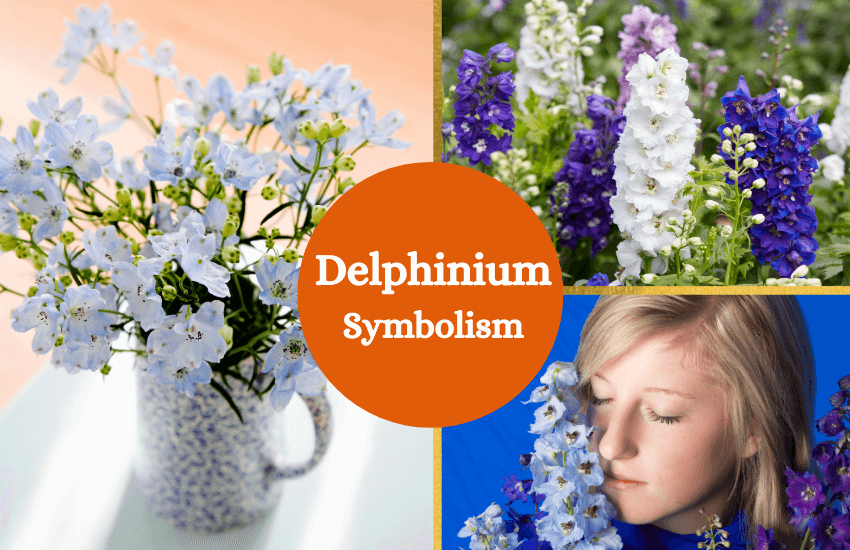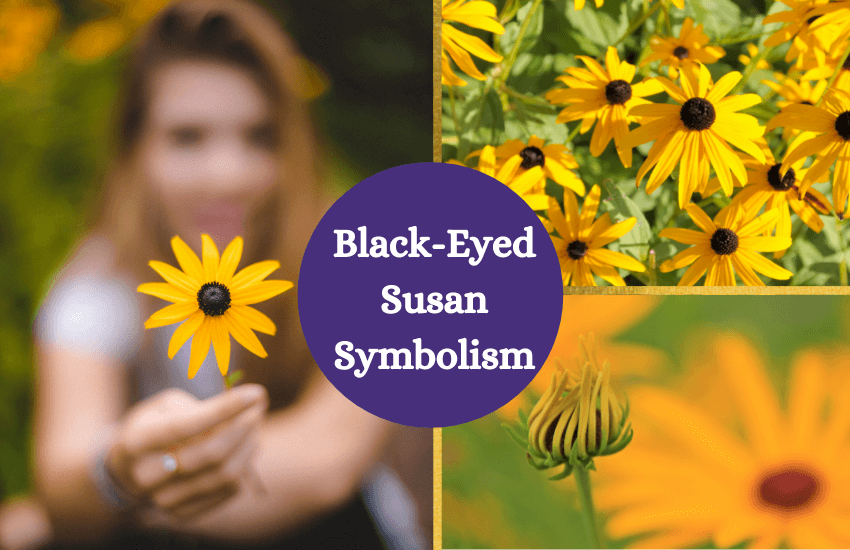
Table of Contents
The Black-eyed Susan, with its golden-yellow petals and dark brown or black center, is not just a visually striking flower but also carries with it a variety of symbolic meanings. Let’s take a look at this beautiful flower, it’s many meanings, and how to use it.
What are Black-Eyed Susans?
Black-eyed Susan is so called because of its daisy-like flowers with dark brown centers. These plants can grow rather tall, up to 3 feet. Their leaves can also get as big as 6 inches, and their stalks can reach a length of 8 inches. Black-eyed Susans typically bloom from June to October. They are long-blooming perennials that can produce beautiful flowers not only in summer but also in early autumn.
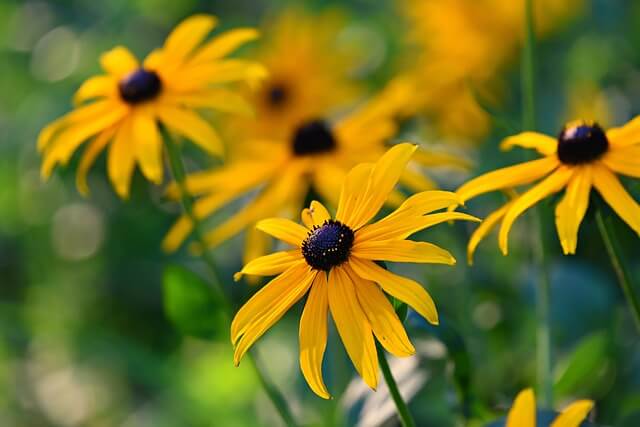
Why were black-eyed Susans named after Susan? The name was probably given to the plant by British colonists, who would have encountered the wildflower in the New World. But who Susan is exactly, we’ll probably never know.
Rudbeckia, the genus name for black-eyed Susans, was derived from the name of the Swedish father and son Olof Rudbeck the Elder and Younger, well-known scientists.
Queen Christina of Sweden was a staunch supporter of Olof Rudbeck the Elder’s work. He even managed to put up Sweden’s first botanical garden, which was originally named Rudbeck’s Garden. When he passed, his son continued his studies and became a famous professor and scientist.
Carolus Linneaus, the man behind the plant’s nomenclature, was one of Olof’s students and named the flowering species Rudbeckia to pay tribute to his teacher.
While black-eyed Susans may seem like a common weed that grows everywhere, their beauty sets them apart from other plants. Louis Comfort Tiffany, an American artist, immortalized black-eyed Susans by having them depicted on a Tiffany Lamp.
Meaning and Symbolism of Black-Eyed Susan

Much of the flower’s symbolism derives from its characteristics and how it grows. Here are some of the associations and symbolic meanings related to the Black-eyed Susan:
- Resilience: Black-eyed Susans are Known for being highly adaptable and for surviving just about anywhere. They’re resilient plants that can thrive even in inhospitable environments. This beautiful wildflower last incredibly long, growing in front yards, roadsides, and even in pavement cracks. They have become perfect symbols of resilience, motivation and encouragement.
- Protection: Historically, some Native American tribes used the Black-eyed Susan for medicinal purposes, including as an external wash for wounds. Thus, it may symbolize protection or healing.
- Happiness and Joy: The vibrant, sunny appearance of the flower easily lends itself to symbolizing happiness, light, and positivity.
- Justice and Truth: After the flower has bloomed, the petals start to droop and expose the dark brown center. The way its center is exposed may also represent justice in a poetic way. Its golden petals shine a light to its otherwise dark center, similar to how justice brings light in the darkness. This light does not mean to condemn but encourages people to overcome and accept whatever darkness is inside of them.
- The Cycle of Life: The Black-eyed Susan, like many flowers, goes through a life cycle of budding, blooming, and wilting. This cycle can be seen as a representation of life’s phases and the inevitability of beginnings and endings.
Medicinal Use of Black-Eyed Susans
Disclaimer
The seeds of black-eyed Susans are poisonous so they are not used for cooking or in medicine. However, the flowers and roots of the plant are widely used in cosmetics and medicine.
North American tribes used black-eyed Susans to address various illnesses, from snake bites and wounds to parasitic worms. The Ojibwa, otherwise known as the Chippewa, used its roots to get rid of parasitic worms in children. They also used it as an external wash for snake bites.
Known for their diuretic properties, black-eyed Susan has been used by other tribes like the Potawatomi and Menominee to increase urine flow. The juice taken from the plant’s roots has been used to treat earache and as a topical application to heal scrapes, sores, and cuts. The strong medicinal properties of this wildflower have helped it maintain its timeless appeal over hundreds of years.
Black-Eyed Susan in Literature
Black-eyed Susan was the inspiration behind a popular poem that attempts to tell the story of two flowers – Sweet William and Black-Eyed Susan. The English poem known as Sweet William’s Farewell to Black-Eyed Susan, was written by John Gay, one of the most famous poets of his time. The poem uses the names of two flowers to create a narrative of two lovers.
Several stanzas of the poem depict how William came aboard and bid goodbye to Susan. He promised that his love for her would stay true and that he would return when the time came. The first stanza goes like this:
‘ALL in the Downs the fleet was moor’d,
The streamers waving in the wind,
When black-eyed Susan came aboard,
‘Oh! where shall I my true love find!
Tell me, ye jovial sailors, tell me true,
If my sweet William sails among the crew.’
This poem perfectly captures how seeding a wildflower like Sweet William with Black-Eyed Susans will give you beautiful blooms all year round. Since they are both biennials and they have complementing gold and bright red colors, they bloom beautifully when they’re together. But this isn’t necessarily the origin of the name of the flower.
When to Give Black-Eyed Susans
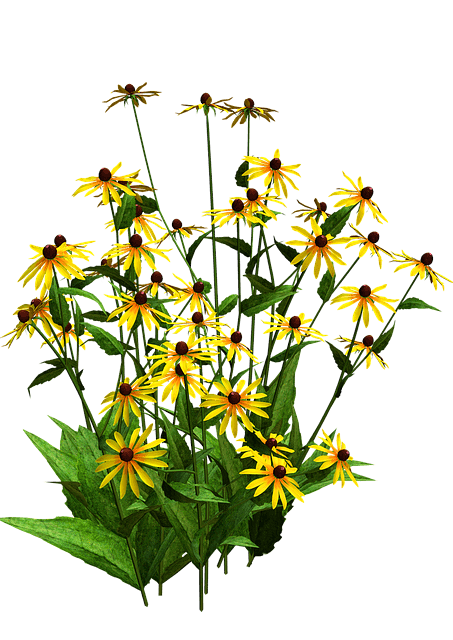
Black-eyed Susans aren’t expensive, flashy flowers, but they are beautiful, simple, and symbolic blooms. You can always give black-eyed Susans to someone going through a hard time. It’s a good idea to include the symbolism of the flower in a card along with the bouquet, so that it’s meaning isn’t lost to the recipient.
If you have a friend or any loved one who is new to gardening, black-eyed Susans are also perfect gifts. They are extremely hardy plants that can tolerate most conditions, so they are perfect for those who have just gotten into gardening. They grow fast as well so they can instantly add more color and pizazz to any garden.
Caring for Black-Eyed Susans
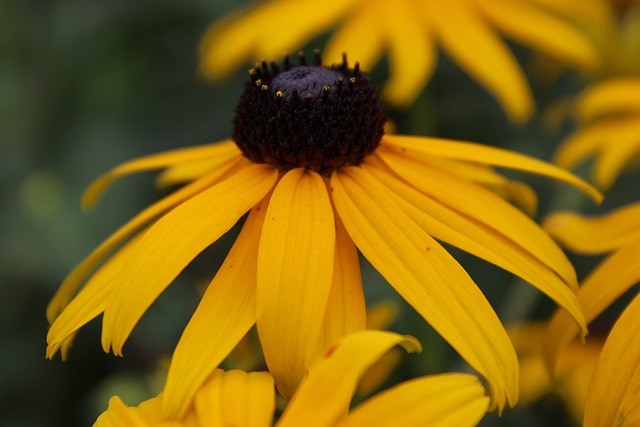
If you’re looking to plant black-eyed Susans in your garden, you’ve made a great choice, as these flowers are easy to look after, and the blooms look cheerful and pretty.
To get the best results, it would be a good idea to plant black-eyed Susans from March to May. Their germination period is 7 to 30 days, so this gives you plenty of time to see them bloom from June to September. It’s also best to plan them in a moist, well-draining potting mix to avoid root rot.
Black-eyed Susans spread wide so planting their seeds closer will help prevent too much spreading. However, if you’re looking to make a border around your garden, it will be best to plant them further apart.
Check your plants every once in a while, to see if they need watering. Don’t let them dry out and keep their soil moist, not soggy. To see beautiful blooms all year round, remove dead or faded flowers and leaves.
Like other houseplants, black-eyed Susans are susceptible to certain pests and diseases as well. They are prone to mildew fungi so start using an organic antifungal spray if their leaves start turning brown. A combination of one tablespoon neem oil and one tablespoon castile soap in a liter of water is also a great way to prevent aphids and mealybugs.
Companion Plants for Black-Eyed Susan
If you’re looking to plant black-eyed Susans in your garden or front lawn, this list of companion plants will help. Fountaingrass, coneflower, and Russian sage are all excellent choices because they complement the beauty of this popular wildflower.
Fountain Grass

Like most types of grass, fountain grass looks great against the backdrop of a golden sunrise or sunset. Its mesmerizing foliage and fuzzy plumes look great in late summer, with plumes ranging from red, pink, or white. Like black-eyed Susans, fountain grass also grows fast and self-seeds freely, so they are exceptionally easy to care for.
Coneflower
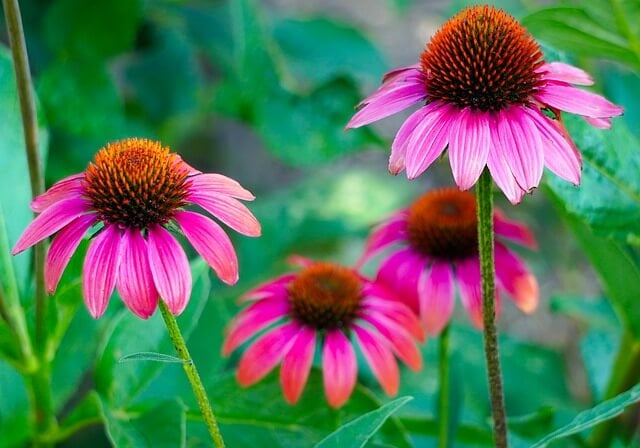
Purple coneflowers attract plenty of butterflies and birds. They have large flowers with drooping petals that look similar to daisies. They thrive in full sun and are resistant to most pests and diseases, making them every gardener’s dream plant. Their white or rosy purple color complements the golden color of black-eyed Susan’s flowers, making them a sight to behold when planted together.
Russian Sage
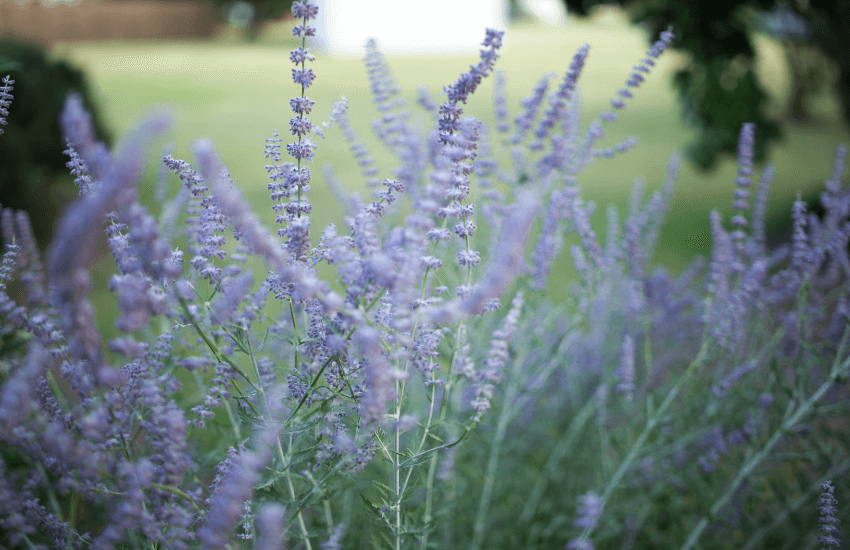
The silvery leaves and blue or lavender flowers of Russian sage make it look great with most flowers. Its aromatic leaves are a bonus too as they give gardens a refreshing smell. Like black-eyed Susans, they bloom for a long time, so you’ll definitely enjoy their pale blue flowers.
Wrapping Up
Black-eyed Susans are excellent symbols of motivation, resilience, and encouragement. A hardy plant that grows all year long, it is a great gift for someone who needs a reminder that they can pull through even the hardest of situations.
Related articles
What is Floriography? – A Closer Look at the Language of Flowers
Masculine Flowers – How to Give Flowers to a Man
Delphinium Symbolism: Positivity, Levity, & Openness
Daffodil Flower – Symbolism and Meaning







